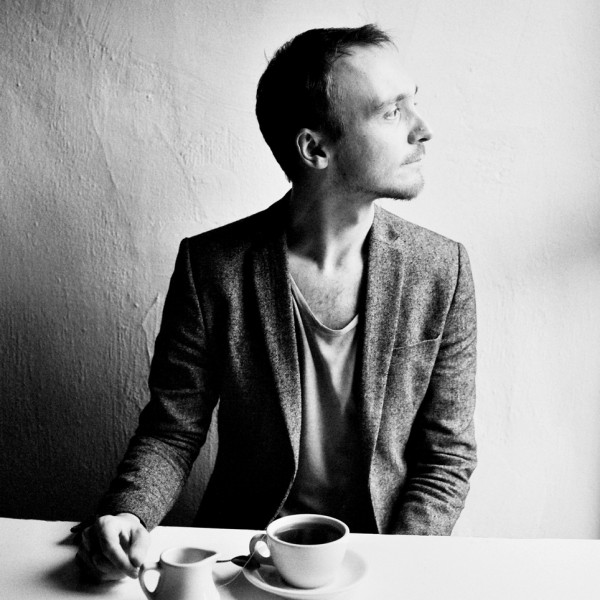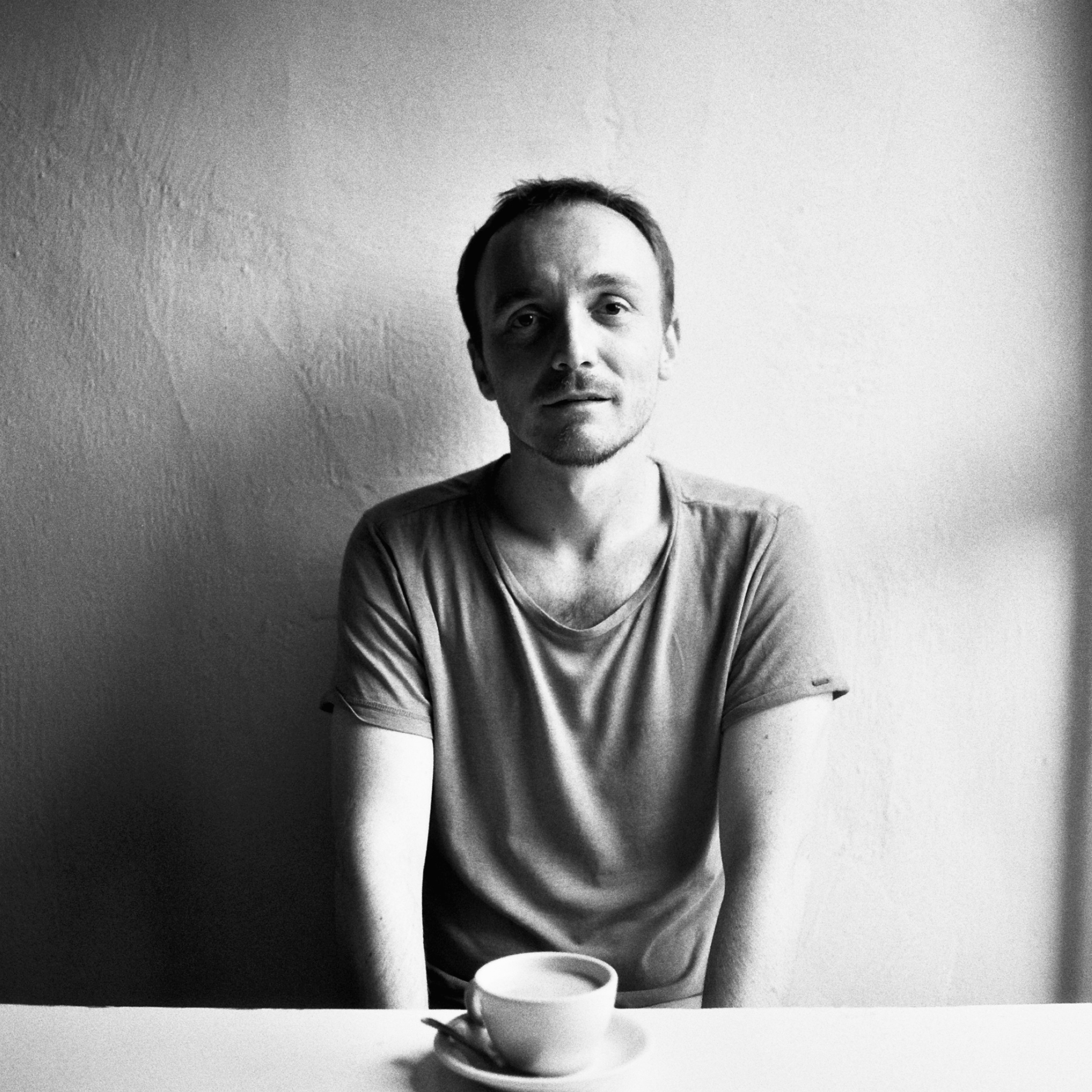
PHOTOGRAPHY BY DANIEL MOSS
Zvonimir Dobrović’s Queer Festival
The curator of the Queer NY Arts Festival sits down for a cup and a chat.
The second edition of the Queer New York International Arts Festival begins October 23. Over the next two weeks QNYIA will present 20 dance, theater, music, installation, and visual arts productions, as well as a series of discussions and other public programs. The festival began in Croatia in 2003 as the vision of Zvonimir Dobrović. It has since become a major international event, with an experimental, creative and cutting edge program featuring artists from around the world. Dobrović and his husband André von Ah co-produced and curated the 2013 New York program. When von Ah unexpectedly passed away last month, Dobrović did not stop their work, but moved forward with the program. The festival will be held in von Ah’s memory, and a performance tribute created by Raimund Hoghe will be held on October 25 at New York Live Arts. We chatted recently with Zvonimir about the event.
Queer New York is one of many international festivals you’ve put on. What are some of the other countries and cities that have hosted a program? My main work is in Croatia. I do two festivals there. Since it began, we have moved it around — we’ve put on a festival in France and San Paolo, we’re doing one in Athens next year, we want to do it in Berlin — there lot of places that are showing interest. So we have set up a concept and framework, and we move it around.
How did you first come up with that frame and concept? I was working for a major theater festival in Croatia and one year they did a project on body art with all different artists. It was a group of queer artists and it talked about queerness and body and norms, but they never presented it like that, explicitly. So I thought it would be interesting to have the word queer in the [title of the festival] so that you can never escape it. That way, you can play with stuff that may not be queer itself, but when you put it in the framework and context of the festival, the audience reads it differently.
Has it been difficult to move forward with the festival, or are you finding the work to be cathartic? It’s been terrible. Very difficult. At first I wanted to cancel it, because it was very difficult to imagine New York without Andre, but he had so much energy put into the festival, so I thought because of my own comfort it would be unfair not to do it. But now I am happy we are able to do it, and that we are doing this special piece about Andre and the festival is dedicated to him. Nothing can make it easier, so this is just something I have to do, and want to do.
What elements of your shared vision with Andre do you hope to keep with you as you move forward with these different projects? Many elements. It was really nice for me to work with Andre because he was an art historian, and a real artist with the way he thought about developing ideas with performers and artists. He was much more deep than me in that sense. Because of him we have this collaboration with the New School this year, and it has given more context to what we are doing. He was very interested in finding new artists and, because he was Brazilian, he was able to show me lots of stuff from Brazil, which has an amazing arts scene. I’m going to miss him in many aspects of course, but especially in this way of seeing things together — I come from eastern Europe and he comes from South America, so we were really a nice complement to each other.
You’ve experienced queerness on such a global scale. How does that definition vary between different places? The size of dick. No, I’m sorry. I am joking, sort of. ‘Queer’ is anything out of the norm, and those norms are created culturally. It’s something that comes from outside or above — religion or government or patriarchy or whatever. I found it really strange that there is no queer festival in New York. It’s an important platform for a festival like this because it’s queerness in a different state. [It varies between countries and cities] in that sometimes queerness is more political, and sometimes things that may not be considered queer in one place, are regarded queer in another. Bringing different performers and artists from different countries brings all these definitions together and evolves the term queer, and that’s what the whole festival is about.
What is the queerest city in the world? Belgrade is a very strange town. In the Balkans, there is a strong tension and sexual energy that comes from repression. It’s fun and it adds to the experience. Brazil has a very queer scene, not just in terms of sexuality and how they treat the body, but with the economics of the whole country. There is extreme poverty and extreme wealth, and that can also be queer.
This year will be the first time the Queer International Festival is in Chicago. How did that start? There is a performing arts gallery called Defibrillator [that features a] similar type of work. It felt like a good fit, so we are bringing three shows to Chicago to develop a bigger plan for the festival. We would love the festival to be national in the U.S., yearlong almost, with shows in many cities. It would be an explosion of queerness and otherness.
What frees or liberates you as a queer person? I like extremes. Not necessarily that I live them, but through the festival I do. I kind of use it as an out of body experience, as well as in the bod. Personally, it was important to do the festival because I grew up in Croatia, which is militantly heterosexual. To break that mold and build your identity on different fragments and experiences is liberating.
Who have been your role models? I really appreciate Peter Tatchell from London as an activist. I am interested in activism and people who want to make the change. I was in Croatia a week ago on this island and I saw a quote: “to live means to build yourself into the time when you live.” That was very beautiful to me and is something everyone should do, through activism or art or whatever. Artists are my role models — they are so focused on whatever they are doing, and they are like sponges, and they take from their essence somehow.
There is such a diverse range of artists in this show. How did you curate the program? I have a lot of artists backlogged. I would need 10 festivals to bring everyone one I want. I get excited very easily and quickly. I take that excitement and that’s how I choose people, with something that kind of discovers an aspect or perspective that you didn’t think of. I think the key for any curator is to be open to things, not to come with a preconceived idea or image of what you want to see or what you want to sell.
In the program brochure, you describe a new definition of queer that is “capable of tracking, discovering, and interpreting new trends.” What are some of those trends? For me, it’s important to break whatever people think about queer. And that break can come when you go beyond the glitter, beyond the traditional image of queer, which is through the gender and sexuality prism. That prism is exclusive, and that’s what the problem is. To take an artist that you may not necessarily see as queer and see through the queer lens, that’s the trick, and that’s what expands the notion.
Which artist are you especially looking forward to in the program? Room 100 is a Croatian group that really plays with our ideas on happiness and illusions, and what you see on stage versus what’s real. They really screw you up , and they brilliantly guide the audience. Bruno Isakovic is another performer from Croatia with a solo piece that is very interesting. I am also looking forward to the Italian group Sineglossa. They put on mini operas, and their show is very visually strong. You think it’s crazy technical stuff but it’s all mirrors and reflections. It’s very beautiful.
What do you hope people take away from the festival? Maybe a different thought. I like festivals because you create a context, and you create a space, and then in that space you can put stuff that people will come and see, which maybe without that frame, they wouldn’t see. So it drives one to the other, the performance to the audience and vice versa. I want people to be surprised and not just to stay within their own expectations.
Click here, for the full schedule of the Queer New York International Arts Festival.


